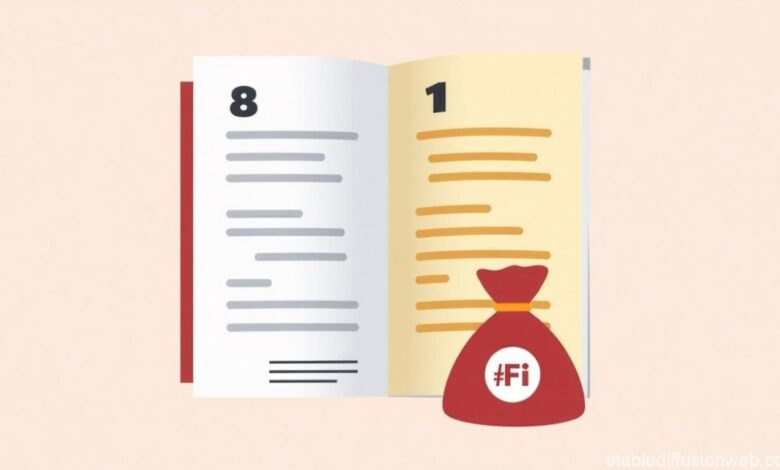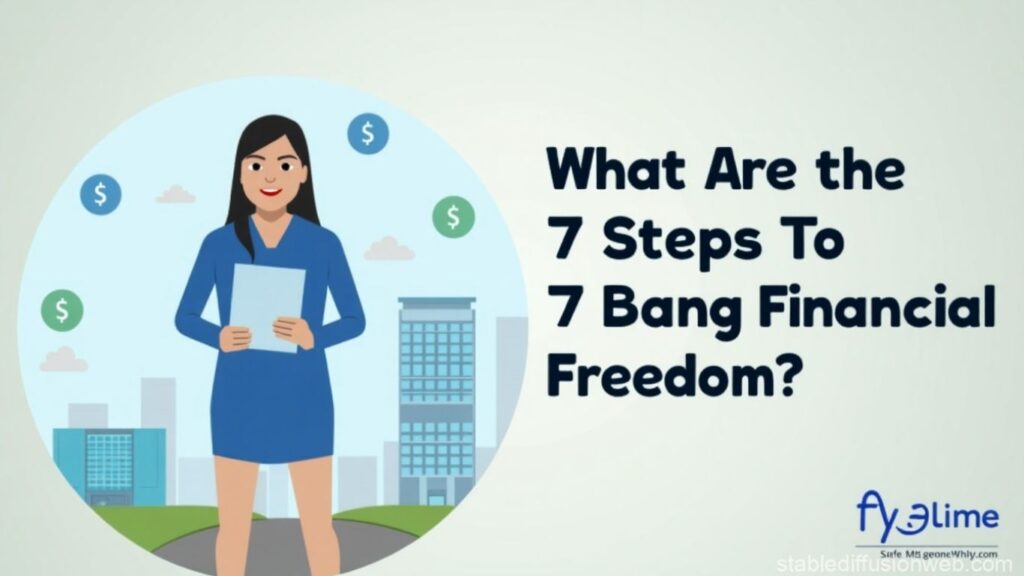How to FI: The Complete Guide to Achieving Financial Independence

In today’s fast-paced world, more people are dreaming of a life with fewer financial burdens and more personal freedom. Whether you want to retire early, travel the world, or just escape the 9-to-5 grind, learning how to FI—short for how to achieve Financial Independence—is your first step.
This guide will walk you through everything you need to know about how to FI, including step-by-step strategies, mindset shifts, and answers to common questions like:
- How to achieve FI?
- How to become financially successful?
- What is lean FIRE vs fat FIRE?
- What is the FIRE lifestyle?
- What are the 7 steps to financial freedom?
Let’s get into it!
What Is Financial Independence (FI)?

Understanding the Basics
Financial Independence (FI) means having enough passive income or savings to live comfortably without needing to work a full-time job. The goal? Time freedom. When you’re financially independent, you’re not tied to a paycheck—you’re in control of your time.
Being financially independent doesn’t necessarily mean never working again. Many who reach FI continue working on passion projects, start businesses, or volunteer. The point is that work becomes a choice, not a necessity.
Why FI Matters More Than Ever
In an unpredictable economy, being dependent on a single job or employer is risky. With automation, outsourcing, and job uncertainty, more people are seeking financial security through independence. FI offers peace of mind, the ability to pivot careers, and even retire decades earlier than the traditional age.
Why More People Are Asking: How to FI?
The idea of how to FI is growing in popularity because:
- Job security is no longer guaranteed
- Traditional retirement age feels outdated
- People value time, autonomy, and purpose more than ever
Many are realizing that working 40+ years for a modest pension is not the only option. By learning how to become an FI, you’re not just pursuing wealth—you’re buying back your life.
Financial Independence is also becoming more accessible thanks to remote work, online income streams, and investment apps. You don’t need to be born rich to reach FI—you need a plan and discipline.
Step-by-Step: How to FI in a Practical Way
1. Track Every Dollar
Use apps like YNAB or Mint to monitor income and expenses. Knowing your spending habits is the foundation of financial independence. It’s not just about budgeting—it’s about awareness.
When you understand where your money goes, you can cut wasteful spending and redirect those funds toward savings or investments. Tracking every dollar may feel tedious at first, but it’s one of the most powerful tools in your FI toolkit.
2. Cut Unnecessary Expenses
Small daily choices add up. Ditch unused subscriptions, lower energy costs, and cook at home more often. Living frugally doesn’t mean living miserably—it means spending intentionally.
Review every category of your spending. Ask yourself: “Does this bring me long-term value?” Cancel services you no longer use. Switch to a more affordable phone plan. Consider biking instead of driving. Every dollar saved helps accelerate your FI journey.
3. Increase Your Income
Boosting your income can fast-track your FI journey. Side hustles, freelancing, and learning how to earn money online can all contribute.
How to earn money online?
- Start a blog or YouTube channel
- Freelance on platforms like Fiverr or Upwork
- Sell digital products or courses
- Offer remote services (design, writing, tutoring, etc.)
The beauty of earning money online is the flexibility and scalability. It allows you to diversify your income and build assets that generate passive income over time.
4. Save and Invest Aggressively
To FI faster, aim to save at least 50% of your income and invest in:
- Index funds
- Real estate
- High-yield savings accounts
Compounding is the magic that builds wealth. The earlier you start investing, the more your money works for you. Stick to low-fee index funds like VTSAX or ETFs and stay consistent.
5. Eliminate Bad Debt
Avoid high-interest debt like credit cards. Focus on paying off existing debts and avoid lifestyle inflation. Use methods like the debt avalanche or snowball strategy to systematically crush your liabilities.
Debt is the enemy of FI. It drains your cash flow and limits your ability to invest. The faster you become debt-free, the sooner you can accelerate toward financial independence.
What Are the 7 Steps to Financial Freedom?

The Proven Path to Success
Learning how to become financially successful involves mastering these 7 steps:
- Track your spending
- Create a realistic budget
- Build an emergency fund
- Pay off high-interest debt
- Invest for the long term
- Increase income sources
- Protect your assets with insurance and a will
These steps are time-tested and work for people from all walks of life. Whether you’re starting from scratch or already have savings, following this plan brings clarity and control.
Lean FIRE vs Fat FIRE: What’s the Difference?
Lean FIRE
Living minimally with annual expenses under $40,000. Ideal for people who enjoy simplicity and frugality.
Lean FIRE requires a smaller nest egg (usually $500,000 to $1 million). It’s appealing to those who can live on less and value freedom over luxury. Many Lean FIRE followers live abroad to reduce costs even further.
Fat FIRE
Living comfortably (or luxuriously) with annual expenses of $80,000 or more. Requires a bigger nest egg, often $2 million+.
Fat FIRE is for those who want to maintain or upgrade their lifestyle in retirement. It takes longer to achieve but offers more comfort and flexibility.
What Is the FIRE Lifestyle?
Living with Purpose and Intention
The FIRE lifestyle (Financial Independence, Retire Early) focuses on:
- High savings rate (50–70%)
- Intentional living
- Avoiding consumer debt
- Investing early and consistently
It’s not just about retiring early—it’s about living deliberately. You question every purchase, minimize waste, and focus on what truly matters: relationships, creativity, freedom, and fulfillment.
What Is the 50/30/20 Rule?
A Simple Budgeting Framework
This budgeting method helps beginners manage money simply:
- 50% Needs (rent, food, bills)
- 30% Wants (dining out, hobbies)
- 20% Savings/Investments
While helpful, those aiming for FI often tweak this to save 40–60%. In FI circles, a 70/30 split is common—70% saving/investing and 30% for needs and wants combined.
What Are the Biggest Money Mistakes?
Avoid These Financial Pitfalls
Avoid these common pitfalls on your journey to FI:
- Ignoring debt or letting interest pile up
- Overspending due to lifestyle creep
- Not investing early
- Neglecting emergency savings
- Failing to set financial goals
Even one of these mistakes can delay FI for years. Stay focused, review your financial plan regularly, and course-correct when needed.
How to Fix a Broken Heart (Science-Backed Tips That Actually Help)

Why Emotional Health Matters in Your FI Journey
While this may seem unrelated to FI, emotional wellness plays a huge role in your financial journey. A broken heart or emotional trauma can lead to:
- Impulsive spending
- Poor financial decisions
- Loss of focus or motivation
Science-backed tips like journaling, therapy, meditation, and reconnecting with passions can keep you emotionally strong—so you stay financially focused.
Healing emotionally helps you regain clarity, make smarter money moves, and stay disciplined on your FI journey.
FAQs – Quick Answers to Common Questions
How to FI?
FI stands for Financial Independence. A person who follows FI practices their savings by decreasing expenses and boosting their earnings and saving money intensely while investing for extended periods.
How to become an FI?
Your investments become sufficient when they cover all your living expenses. Strategic financing requires three key components which include budgeting system and earning income along with future planning strategies.
How to become financially successful?
To build wealth you must learn financial planning then continuously invest your money and stop letting your expenses grow while developing various sources of income.
How to earn money online?
Freelancing and affiliate marketing along with selling digital goods and creating a blog or providing online services can be potential options to consider.
What is lean FIRE vs fat FIRE?
The financial independence attained by LeanFIRE exists at a bare minimum level while Fat FIRE enables comfortable living from a substantial savings amount.
What are the 7 steps to financial freedom?
These financial practices include budgeting, saving money, investing funds, boosting income level, lowering debt amounts, creating an emergency savings account, and safeguarding your possessions.
What is the FIRE lifestyle?
The path towards financial freedom leads through simplicity while it teaches saving more to create a life of intention.
What is the 50 30 20 rule?
A basic budget: 50% needs, 30% wants, and 20% savings/investing.
What are the biggest money mistakes?
Overspending, ignoring debt, not investing early, and failing to plan.
Conclusion: Your FI Journey Starts Today
Achieving FI isn’t just about money—it’s about freedom. Knowing how to FI empowers you to live life on your own terms. Whether you’re just starting or already on the path, remember: every dollar saved, every investment made, and every financial decision brings you closer to your goal.
Financial Independence isn’t just a dream—it’s a plan. And now, you know exactly how to start.
CLICK FOR MORE INFORMATION Buzznewsdaily




